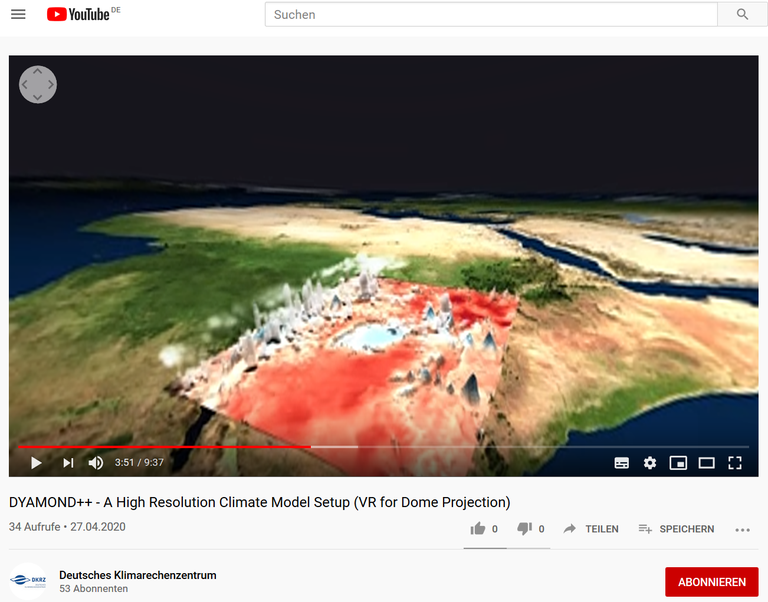01.05.2020
This 180-degrees film was created and intended to be shown as a dome projection at the joint Eurographics/EuroVis2020 Conference in Norrköping, Sweden as part of the "Wisdome Contest 2020". However, due to the corona pandemic, the presentation originally planned for May 25, 2020 had to be cancelled.The film was produced by Niklas Röber (DKRZ) with support from Michael Böttinger, Florian Ziemen, Monika Esch, Cathy Hohenegger, René Redler, Björn Stevens, Thorsten Mauritsen, Michael Migliore, Carson Brownlee, Johannes Günter, Greg Johnson and Jim Jeffers. Special thanks goes to the Helmholtz Center Geesthacht as well as to the teams of INTEL OSPRay and Kitware SAS.
The numerous visualizations were produced by Niklas Röber, using ParaView and Intel’s OSPRay raytracing backend, and were created within the scope of the EU-funded and DKRZ-coordinated project ESiWACE (Centre of Excellence in Simulation of Weather and Climate in Europe). Intel’s OSPRay's raytracing backend allows for an especially realistic representation due to its pathtracing algorithm with anisotropic scattering.
Climate simulations clearly belong to the most data-intensive scientific disciplines. The output generated by current models is increasing in size, as well as in complexity. The increase in complexity is due to a maturing of models that are able to better describe the intricacies of the climate system, while the gain in size is a direct result of the finer spatial and temporal resolutions that are required to capture those small-scale processes.
DYAMOND++ is a project using the globally coupled Earth system model ICON-ESM at a resolution of 5 km to study a wide range of Earth’s weather and climate phenomena. The visualization of these large data sets is not trivial and large high-resolution display surfaces, such as 4k screens and planetarium domes, are very suitable to convey the simulated complex information.
DYAMOND video on YouTube: here.

